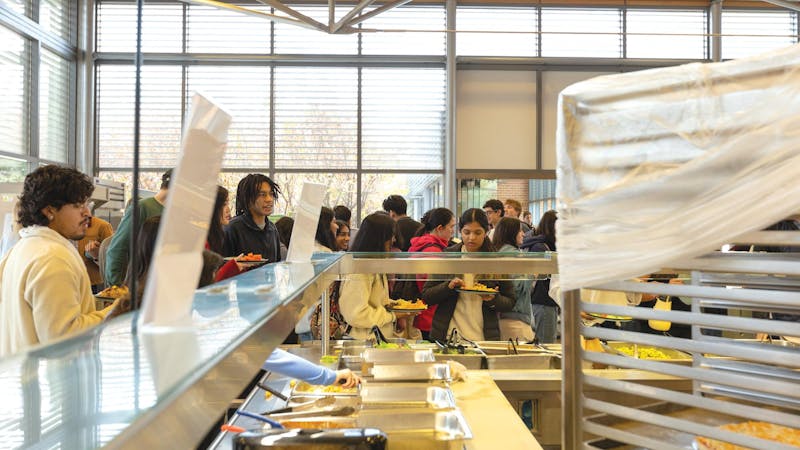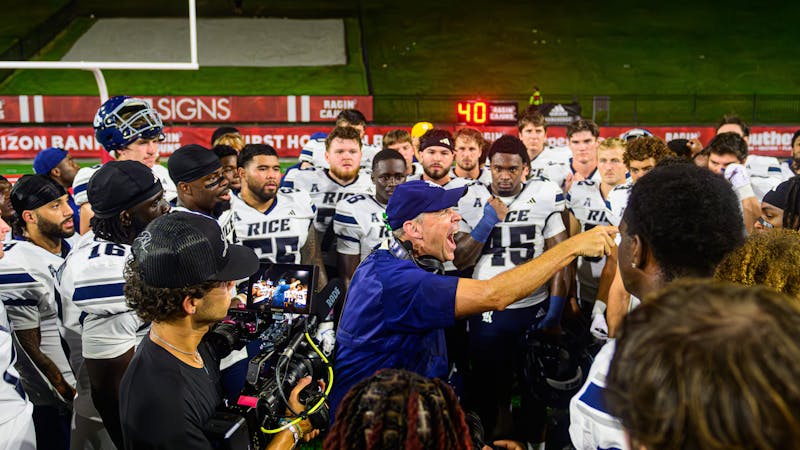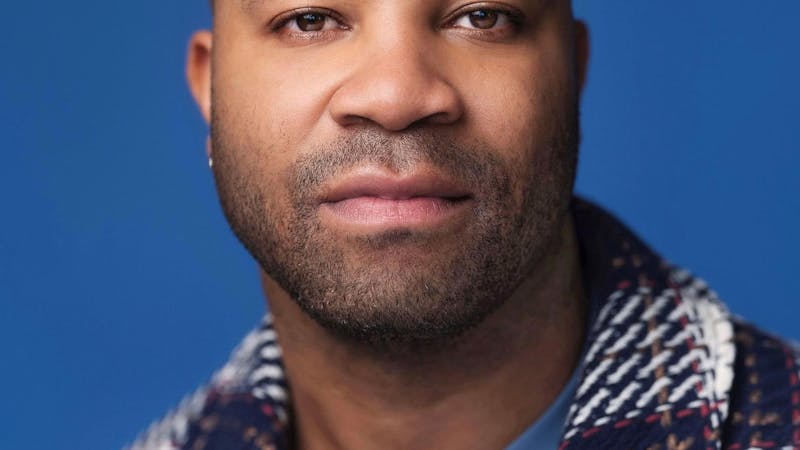A tribute to Atget
Digital camera in one hand and a pile of prints in the other, Jones College senior Hallie Jordan roamed around Paris last June on a mission to recapture the same locations photographed by Eugene Atget 100 years ago. As part of the Fotofest 2012 Biennial, Jordan's Days and Nights in Paris: In the Footsteps of Atget is on view at the Rice University Media Center now through March 23.
On a suggestion by Visual and Dramatic Arts Professor Geoffrey Winningham, Jordan sifted through the prodigious body of work taken during the master French photographer's 20 year tenure in Paris and applied for a Focus Europe grant through the School of Humanities. Jordan, an English major and Rice Thresher Senior Editor, said she decided to follow Atget in particular because though he virtually never wrote about his work, he documented everywhere he shot and wrote the exact address on each of his photos.
"It's unclear whether Atget considered his photography art. I assume he must have been there for the art otherwise he wouldn't have lugged around a huge, wooden camera for 20 years," Jordan said.
Rather than aim to imitate Atget's photos exactly, Jordan chose to develop her own distinct style of photography within the context of her era, taking into account the technological advances embodied by her digitial, color film camera, she said.
"I tried to think about what Atget was doing but I wanted to make my own images that were still recognizably of the same spots," Jordan said.
After receiving the grant, Jordan xeroxed between 100 and 150 of Atget's prints for her to reference while in Paris. Jordan selected photos based on what looked interesting as well as what was locatable, she said. Once in Paris, Jordan mapped out where she went every day according to images she compiled that where taken by Atget within the same vicinity.
"I would take five to six photos with me for a day," Jordan said.
The rain and gray clouds over France were not only unexpected but also put a damper on Jordan's motivation when she at first arrived, she said. After watching the then recent blockbuster Midnight in Paris, Jordan said she found herself, with reinvigorated spirit, out until four and five a.m. capturing the sites of Paris.
"When Hallie came back from Paris, she had so many photographs that it took me two weeks to go through them all with her. She simply did an amazing amount of work. I don't think she could have slept at all," Winningham said.
Jordan, with the help of Winningham, created a photo book in the fall. They painstakingly went through her photos, cutting hundreds and pairing the remainder with those with Atget's. Her accompanying text describes the photos' historical and present-day context as well as anecdotes from her visit. The exhibition in the Rice Media Center is just an imitation of the book, Jordan said.
The layout and juxtaposition of Atget's and Jordan's photos in the show highlights a dialogue between Jordan and Atget and Jordan and Paris. One of the most striking contrasts is the atmosphere captured by Jordan verses that captured by Atget. Many of Atget's photos in the show have little or no people. His photo of Cafe du Montparnasse features a barren street with lines of empty chairs and tables lining the right-hand sidewalk. Jordan's take on Montparnasse captures the same street but with patrons of the cafe packed into every chair.
Paris looks like a stately ghost town in Atget's photos for two reasons: Atget photographed most of his work at 5 a.m., and his exposures were several minutes long so most of the people probably just blurred out, Jordan said.
Some of Jordan's photo comparisons play visual tricks on the viewer. Jordan's juxtaposition of a performing American high school band with Atget's photo of an audience of school children sitting mesmerized in the Jardin du Luxemburg creates a dialogue of past and present. It is as if the school children of 1898 are listening to the band of 2011.
Other pairs of photos such as those of Notre Dame, Terre-plein du Pont-Neuf and Quai de Montebello demonstrate that the "Old Paris" Atget set out to preserve with his own project, is still alive in the building facades and local Parisians of today.
"Hallie captured Atget's essence really well, proving that the more things change the more they stay the same," said Brown College senior Cass Turner.
La Marais is a section of Paris that from her study, Jordan believes Atget did not photograph. However, Jordan includes photos of La Marais in her exhibition, saying she was so enamored by the "official gay neighborhood" this was an opportunity to capture a novel setting in Atget's distinct style. Visitors wonder whether Atget would have ever encountered characters such as Jordan's begrudging female muse photographed in a watch shop doorway.
"I want viewers to take away an awareness of Atget and a sense of enjoyment in seeing the differences and similarities in history," Jordan said.
More from The Rice Thresher

Over 1,000 students petition against new meal plan
When Konstantin Savvon opened the Housing and Dining email announcing the new unlimited meal plan, he was instantly concerned about the impact on off-campus students like himself.

Rice football wins season opener under new coach
For the first time since 2018, Rice football opened its season with a victory. Scott Abell was soaked with yellow Powerade following a 14-12 win on the road Saturday against the University of Louisiana at Lafayette, which won 10 games and made it to the Sun Belt Conference championship last season.

Acting like an athlete: Rice basketball alum takes on Broadway
Underneath Chadd Alexander’s Broadway costume, there’s ankle tape and wrist braces — same protective gear he wore as a walk-on basketball player at Rice, though now he’s performing eight shows a week in the ensemble of “Harry Potter and the Cursed Child” instead of running conditioning drills in Tudor Fieldhouse.

Please note All comments are eligible for publication by The Rice Thresher.